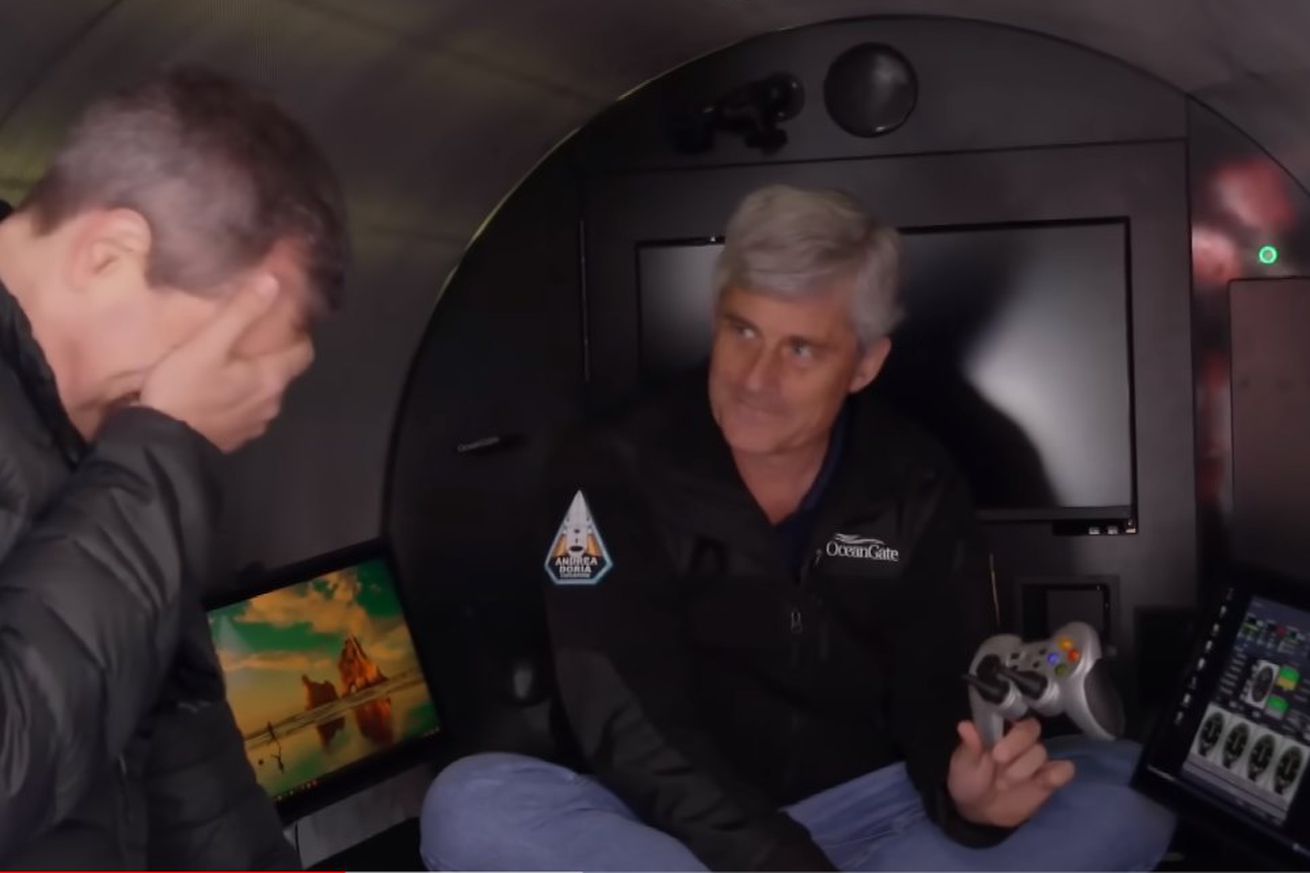
The missing Titanic tour sub is steered with a simple Logitech gamepad
On Sunday morning, an OceanGate submarine vessel with five people aboard went missing in the Atlantic about an hour and forty-five minutes into a planned trip to explore the wreckage of the RMS Titanic. Made of carbon fiber and titanium, the vessel has enough air for 96 hours; however, as word of the emergency has spread, there’s also shock at the wireless Logitech F710 gamepad used for steering.
The Titan advertises “state-of-the-art lighting and sonar navigation systems plus internally and externally mounted 4K video and photographic equipment,” and this CBS News Sunday Morning segment from David Pogue, taken last summer, showed the reporter laughing as he was shown its controls. OceanGate CEO Stockton Rush holds up the F710, saying, “We run the whole thing… with this game controller.” The reporter refers to the “MacGyver jury-riggedness” of the whole thing, using many off-the-shelf parts, as Rush said, “certain things, you want to be button down,” noting work with Boeing and NASA.
This isn’t entirely unusual — as we’ve mentioned previously, the US Navy uses gamepads to control submarine periscopes and the photonic masts that have replaced them, and The Boring Company has shown an Xbox One controller steering one of its massive drilling machines.
Gamepads are versatile, comfortable, and familiar to use, but I’ve had controllers malfunction during intense matches enough times to raise an eyebrow at seeing a fairly generic wirelessly connected device being relied on for something so important. This isn’t just the periscope, as described by Rush — it’s the vessel itself.
Trips aboard the five-person Titan submersible reportedly cost $250,000 per seat. A release signed prior to the expedition explains that “this experimental vessel has not been approved or certified by any regulatory body, and could result in physical injury, emotional trauma, or death.”
Other elements of Pogue’s experience are more distressing. During one of the dives, as he remained on the ship, the submersible got lost for hours and never found the wreckage, while OceanGate shut off internet access during that time, saying it needed all available channels to try to maintain contact with the sub.
It’s unclear what kind of internet connection was available on the ship then, but OceanGate tweeted last week that its 2023 expeditions are relying on Starlink’s satellite internet service to communicate with the outside world. Without GPS, the Titan is guided underwater via text messages sent from the surface ship; however, in a BBC News interview, Pogue noted those might only work when the sub is directly beneath the ship.
He also said in a tweet that it’s not equipped with an emergency locator beacon that might help rescuers find it, either on the ocean floor or once it’s risen to the surface. The submarine is also bolted from the outside, so those in it would need rescuers to get them out, even once it makes its way to the surface, using one of several methods available.
The location of the trip is listed as about 380 nautical miles south of Newfoundland, Canada. The US Coast Guard has been part of the search since Sunday morning, using aircraft with sonar to search underwater, sonar buoys, sonar from the expedition ship, and looking on the surface. The latest update from the Coast Guard said the search area completed as of this morning is 10,000 square miles, and they have scheduled a press briefing for 1PM ET with further updates.

